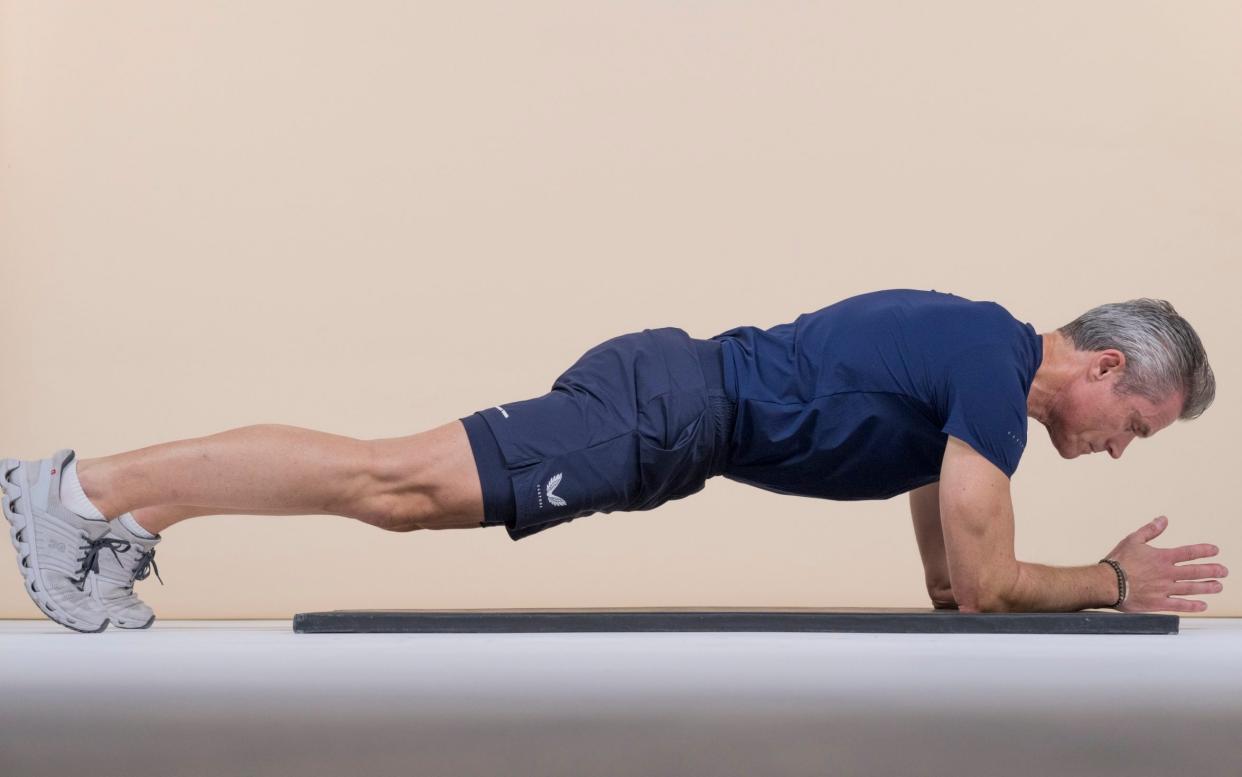Four core exercises that will help you stay upright as you age

We all dream of a flat stomach or even a six-pack, but there are other, arguably more important reasons to work on your core. Beyond aesthetics, a strong core is crucial for overall health especially as we get older. And by ‘core muscles’, I don’t just mean the abdominals but also the muscles in your lower back, hips, and pelvis.
First off, a strong core can go a long way towards preventing back pain. The core muscles support the spine and pelvis; they help maintain proper posture and alignment, alleviating pain when they are activated. When these muscles are weak, the burden falls on the lower back, leading to strain and discomfort.
While many of us are tempted to avoid exercise when we’re in pain, in fact research published in the Journal of Orthopaedic & Sports Physical Therapy shows that core strengthening exercises can significantly reduce chronic lower back pain by improving muscle endurance and stability.
Second, good core strength will help you stay upright as you age. Studies have shown that older adults with better core strength have improved balance and are less likely to experience falls and the risks associated with it.
Falls are a leading cause of injury in older adults and this is particularly relevant for those with impaired bone density. A robust core can help prevent falls by enhancing proprioception (the body’s ability to sense its position in space) and improving reaction times, so that if you trip you can right yourself before you fall. Indeed, research in the journal Clinical Interventions in Aging shows core exercises can reduce the incidence of falls in the elderly population. Strengthening your core also enhances the ability to perform everyday activities safely, from bending down to pick up objects to climbing stairs or dealing with active grandchildren or pets.
Investing a small amount of our time in core exercises can pay significant dividends in midlife and beyond. Remember, the core is not just about working your abs, it’s the foundation of your body’s strength and stability.
Incorporate these exercises into your routine to enjoy a healthier, more active and longer life.
Plank
How to do it: Start in a push-up position, with your body forming a straight line from head to heels. Hold this position, keeping your core tight and your back straight and over time increase your duration.
Why it works: The plank engages multiple core muscles simultaneously, improving overall stability and endurance.
Bird-Dog
How to do it: Begin on all fours, with your hands under your shoulders and knees under your hips. Extend your right arm forward and your left leg backward simultaneously. Hold for a few seconds, then return to the starting position, repeat for 10-20 reps and switch sides.
Why it works: This exercise improves balance and coordination while strengthening the lower back and abdominal muscles.
McGill sit-up
How to do it: Lie on your back with your right knee bent and extend your left leg. Place your left hand under your lower back and your right hand behind your head. Lift your head, shoulder blades and upper back off the floor. Repeat this movement for 15 reps on each side.
Why it works: This exercise strengthens core muscles without putting excess strain on the lower back.
Glute bridges
How to do it: Lie on your back with your knees bent and feet flat on the floor. Lift your hips toward the ceiling, squeezing your glutes at the top. Lower back down and repeat. Over time, add weight to your hips and increase your rep range up to 20-30 reps per set.
Why it works: This exercise strengthens the lower back, glutes, and hamstrings, all crucial components of the core.
Understanding Your Core
Contrary to general understanding, the core is not only the abdominal muscles. It includes the muscles in your lower back, hips, and pelvis. The key muscle groups involved are:
Rectus abdominis: commonly known as the “abs,” these muscles run vertically along the front of the abdomen.
Transverse abdominis: The deepest abdominal muscles, wrapping around the spine for protection and stability.
Obliques: Located on the sides of the abdomen, they assist in twisting and bending motions.
Erector spinae: A group of muscles running along the spine, crucial for maintaining an upright posture.
Pelvic floor muscles: These support the pelvic organs and are important for core stability.

 Yahoo News
Yahoo News 
